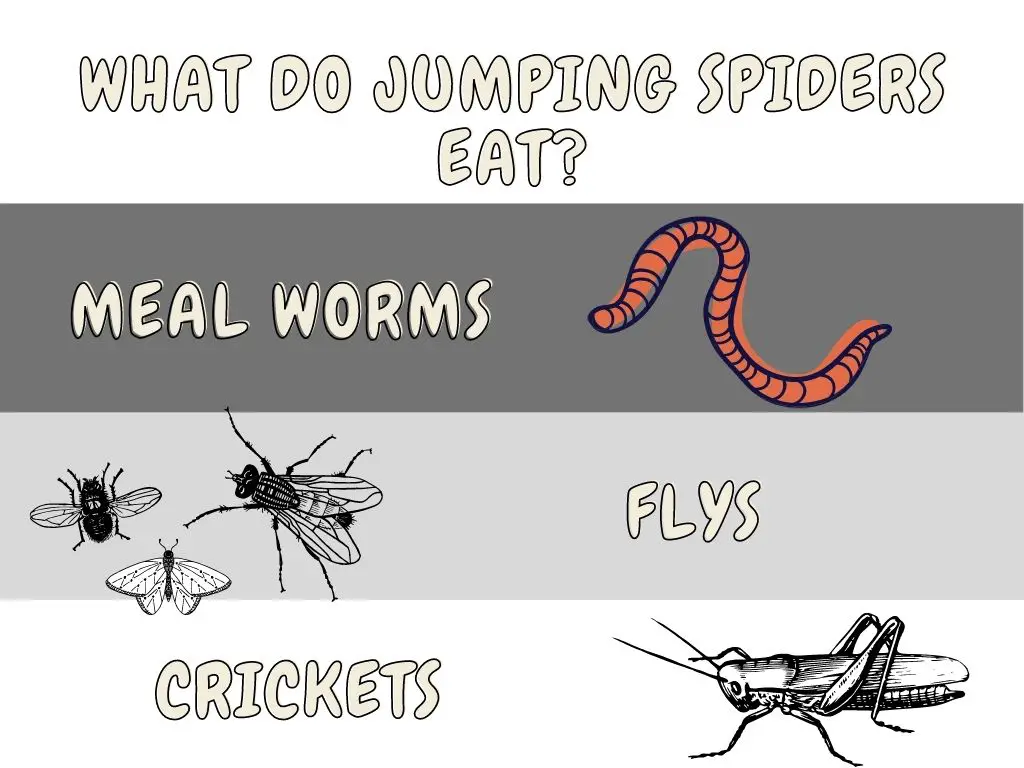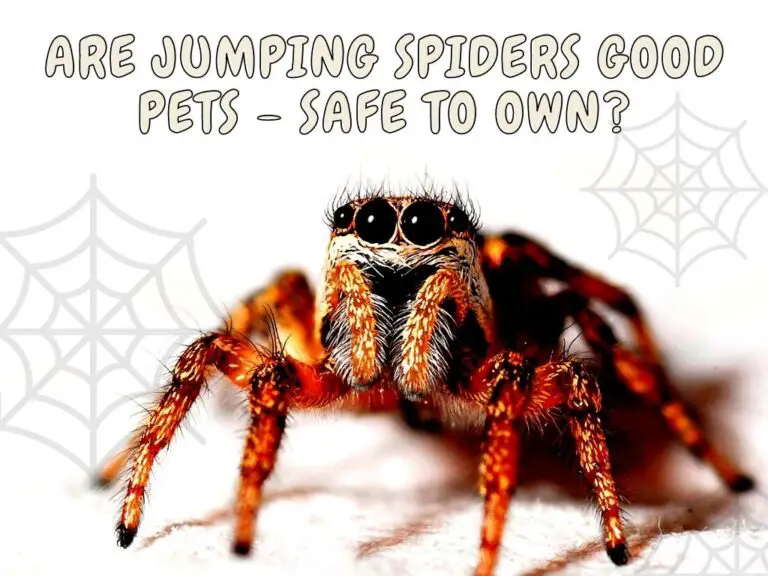The first impression they say matters a lot, which is no exception when jumping spiders. At first glance, these little leapers will send chills down your spine as you may freak out a little bit. But guess what, they are among one of the friendliest exotic pets we have come across.
Sure, jumping spiders are venomous and capable of incapacitating their prey, but you know what, these creatures are friendly to humans.
Of course, humans aren’t immune to their bite, but should you ever get bitten by a jumping spider; you’ll only notice redness and irritation that fades away after a couple of days.
Do Jumping spiders make great pets?
For people who aren’t squeamish about spiders, you’ll most likely enjoy keeping them as pets. Their intriguing antics, hunting behaviours, and homemaking skills make them a joy to observe.
We love the fact that these beautiful creatures are silent; this means, they won’t disturb your neighbours or housemates.
The only caveat with raising our fuzzy friends is that they are excellent escape artists, to this end, you have to keep them in an enclosure that is secured; this way, you won’t worry about losing them.
If you’re planning to keep our furry friends as pets, please ensure you create the right habitat. This shouldn’t be a problem as jumping spiders can adapt to almost any habitat. Anything from a terrarium to a glass jar or tank with ample space to roam around will work just fine.
Are jumping spiders dangerous?
While there have been many misconceptions about spiders in general, jumping spiders are believed to be friendly and don’t pose any threat to humans.
Of course, our leaper friends will occasionally bite in self-defence; their bite is usually not poisonous. To this end, our spider friends haven’t considered a considerable danger to humans.
Should you ever get bitten by a jumping spider, the most you’ll likely see is redness and irritation around the bite site. And this usually fades away after a couple of days.
How do I find Food For jumping spiders
If you plan on keeping jumping spiders as a pet, you must be prepared to care for them accordingly. While these intelligent creatures are excellent hunters and can fend for themselves in the wild, when they are raised in captivity, their hunting skills fizzle into oblivion as they are now kept in a controlled environment.
As such, you have to make sure you provide their favorite prey regularly.
While most jumping spiders can survive a week without food, you should try to feed your spider an insect every 2-3 days.
Here is a list of popular jumping spider foods you can start with.
- Flies
- Roaches
- Crickets
- Mealworms

Amazingly, these spider foods are readily available, and you can find them in pets stores close to you. Alternatively, you can order online.
But while feeding your exotic pet, here are some foods you should never offer them.
Avoid offering hard-shelled beetle to your leaper friend. Also, they do not do very well with ants as these insects will end up pinching and injecting formic acid, which is lethal to them.
If you’re offering cricket to your spider, please try not to offer a large-sized cricket as it can end up harming or even killing your pet. As a general rule, try to offer only crickets that are at least 1.5x the length of your spider.
Enclosures and Spider care
Raising our fuzzy friends in captivity will entail getting a lot of things right. While in the wild, these creatures are used to roaming around freely, but when bred in captivity, they are kept in a controlled environment.
If you want your spider to thrive very well, it’s essential to keep it in an enclosure with plenty of space, abundant ventilation, and light. And that’s because jumping spiders are active creatures who don’t do very well in cramped spaces.
Sure, some species of jumping spiders can fit into vials and glass jars, but if you want to provide the best enclosure that gives them the feel of their local habitat, you’ll not go wrong to invest in a terrarium or tank.
Can you keep multiple spiders in the same space?
While jumping spiders are friendly, they don’t do very well together, so it’s important not to keep more than one jumping spider in an enclosure. Doing so is a recipe for disaster, and your spiders may end up fighting to the death.
Of course, it’s okay to put the male and female together for mating purposes, but endeavour not to leave them together for too long as the female may end up eating the male.
If you plan on mating the female with a male, please ensure you have crickets and flies lying around. This way, you’ll prevent them from taking on themselves.
Frequently asked questions
What is the lifespan of a jumping spider?
Like most spiders, jumping spiders have a really short life span. While some species of jumping spiders can survive for three years, some can only survive for six months. Also, keep in mind that male jumping spiders don’t live as long as their female counterparts.
How often should you feed jumping spiders?
Because they don’t eat much, jumping spiders are so easy to care for and maintain. If you’re raising juvenile jumping spiders, it’s okay to feed them every 1-2 days.
For older jumping spiders, you can feed them every 2-3 days.
As they age, jumping spiders become weak and are no longer able to hunt. As such, you should serve them dead prey instead.
Can jumping spiders kill you?
While these creatures have strong venoms that can paralyze their prey, they aren’t harmful to humans. Should you ever get bitten by a jumping spider, you’ll only experience mild irritations and redness that disappears after a few days.
Conclusion
Without mincing words, our fuzzy friends make excellent pets. Plus, they are super easy to care for as their diet can be caught or bought from pet stores close to you. Although they are excellent hunters and can take out their prey with precision jumps, these creatures are friendly to humans. This explains why a lot of people keep them as pets.
- Regal Jumping Spider Lifespan – How Long Do They Live?
- How Often Do Jumping Spiders Molt – Interesting Spidey Facts
- What Do Jumping Spiders Eat In The Winter Months – Spidey Facts
- Do Jumping Spiders Live in California – Top 2 Species
- Is A Jumping Spider Poisonous – Do You Need To Fear?
- Jumping Spider Bite Symptoms – Is It Harmful?





